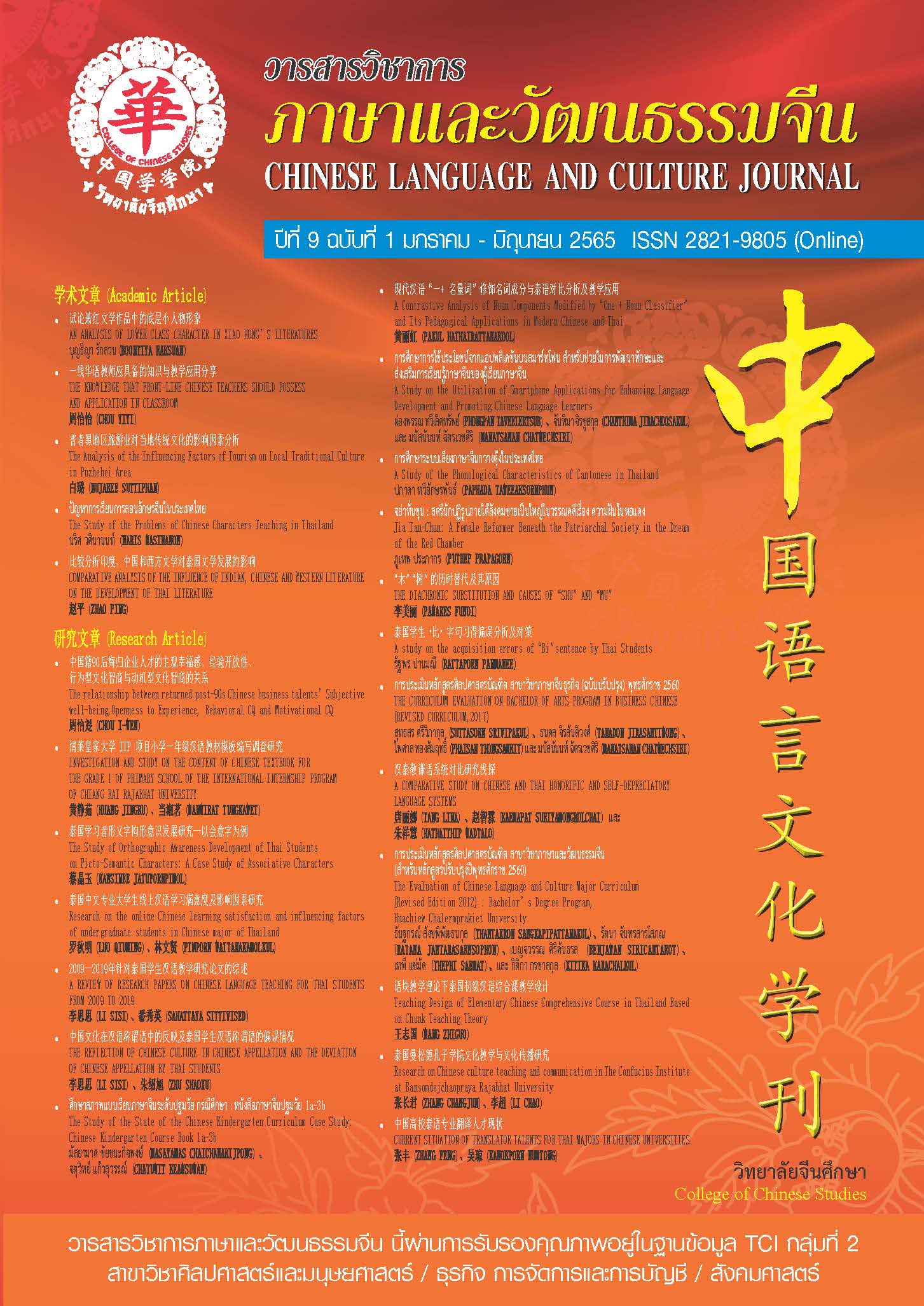The “木”“树”的历时替代及其原因
THE DIACHRONIC SUBSTITUTION AND CAUSES OF "SHU" AND “MU"
Keywords:
MU, SHU, Semantic Systems, DiachronicAbstract
This paper investigated the meaning origin of the diachronic substitution words "MU" and "SHU" in detail from the perspective of the development and adjustment of linguistic system based on the previous studies. On the basis of combing the semantic system of "MU" and "SHU" as well as exploring the extended ways and reasons for the development and evolution of the meaning involved. This paper described the diachronic process of their mutual substitution and the possible reasons for their substitution.
It is believed that the trend of substitution should first appear in the cooperated structure of "SHU" and "MU", which is premised on the emergence of the noun meaning of "SHU". Verb meaning "SHU MU" and noun meaning "SHU MU", one is verb object structure and the other is combined structure; The semantic expression is totally different, but they have coexisted in language for a period of time. After the emergence of the noun meaning of "SHU", it continues to expand in function. The most important thing is the emergence of "X+SHU" format. When the noun meaning of "SHU" takes over the role of "MU", more and more " X+SHU " are generated.
This paper agrees that "SHU" has replaced "MU" in spoken language at the latest between Xi Han and Dong Han Dynasty, and basically replaced "MU" in written language in the Wei, Jin and the Nan Bei dynasties. The reason for its replacement is the result of the adjustment of lexical semantic system and the separate responsibilities in the various language forms of style. The adjustment of lexical semantic system is that "MU" mainly takes a series of meanings related to "MU BEN", while "SHU" mainly takes the original meaning of trees. As a general name of trees, it was classified all the kinds of trees into the different proper names. The separate responsibilities of language form is that "MU" mainly plays a role as a morpheme, which has strong productivity as well as forms a large number of compound words with written language; As a general term, "SHU" maintains a monosyllabic form and has a high frequency of oral use; As a disyllable proper name, "X+SHU" has a strong stylistic standard.
References
丁喜霞.关于“常用词演变研究”命题的思考[J].语言研究,2013(3).
广州外国语学院.泰汉词典[Z].北京:商务印书馆,1990.
邢公畹.汉台语比较手册[M].北京:商务印书馆,1999.
刘世儒.魏晋南北朝量词研究[M].北京:中华书局1965。
朱骏声.说文通训定声[M].武汉:武汉市古籍书店,1983.
许慎撰,徐铉校定.说文解字附检字[M].北京:中华书局,2004.
李宗江.汉语常用词演变研究[M].北京:商务印书馆,1999.
杨树达.马氏文通刊误古书句读释例古书疑义举例续补(合订)[M].上海:上海古籍出版社,2007.
汪维辉.东汉——隋常用词演变研究[M].南京:南京大学出版社,2000.
汪维辉.汉语常用词演变研究的若干问题[J].南开语言学刊.厦门大学,2007(1).
张舜徽.说文解字约注[M].郑州:中州书画出版社,1983.
郭沫若主编.甲骨文合集[M].北京:中华书局,1982.
黄金贵.古汉语文化词义集类辨考[M].上海:上海教育出版社,1995.
商承祚.甲骨文字研究[M].天津:天津古籍出版社,2008。
黄树先.汉语核心词“木”研究[J].汉藏语学报, 2010(4).
董为光.汉语词义发展基本类型[M].武汉:华中科技大学出版社,2004.
董志翘.再论“进”对“入”的历时替换——与李宗江先生商榷[J].中国语文,1998(2).
蒋绍愚.古汉语词汇纲要[M].北京:北京大学出版社,1989.
黎千驹.论《说文解字》中的阴阳五行学说[J].怀化师专学报,1997(4).
Downloads
Published
How to Cite
Issue
Section
License
Copyright (c) 2022 Journal of Chinese Language and Culture, Huachiew Chalermprakiet University

This work is licensed under a Creative Commons Attribution-NonCommercial-NoDerivatives 4.0 International License.
บทความที่ได้รับการตีพิมพ์เป็นลิขสิทธิ์ของวารสารภาษาและวัฒนธรรมจีน มหาวิทยาลัยหัวเฉียวเฉลิมพระเกียรติ
บทความใน “วารสารวิชาการภาษาและวัฒนธรรมจีน” เป็นทรรศนะของผู้เขียนโดยเฉพาะ กองบรรณาธิการไม่มีส่วนในความคิดเห็นในข้อเขียนเหล่านั้น




